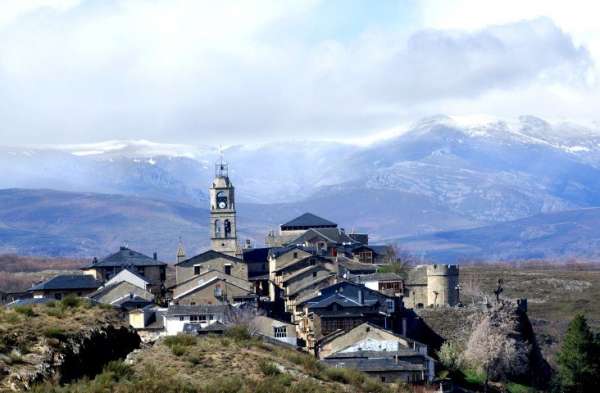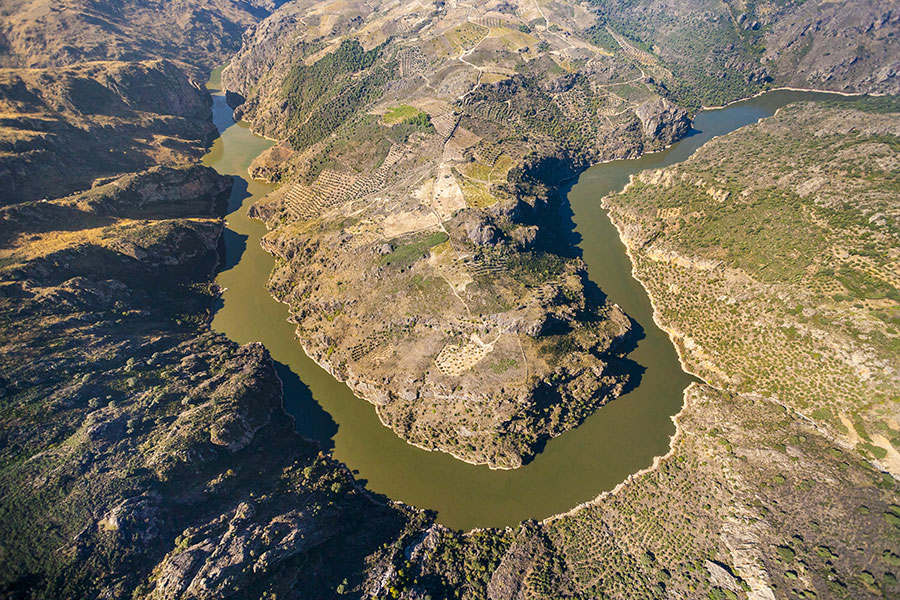Arribes
The Nature Park of Arribes del Duero, with 106,105 hectares shared between the provinces of Zamora and Salamanca, is known for its deep canyon, open by the river bed, with walls that in some places are more than 200 metres high. For more than 80 kilometres (fifty shared with the Portuguese border), the Duero rapidly descends in altitude. This has made an impressive collection of dams possible for hydroelectric power, which increase the aquatic dimensions of this nature park.
The microclimate of this fabulous area, with a mild average annual temperature, the absence of frost and a certain level of humidity, has encouraged Mediterranean species of animals and plants to thrive here. These peculiarities favour the development of cistus, “escobas,” lavendar… and also create unique places such as the cork forests of Fornillos de Fermoselle. Vines, olive trees, strawberry trees and junipers grow in the typical ravines of Arribes.
 Rocky outcrops are characteristic of this natural area, where valuable species such as the common vulture, golden eagle, black stork, Egyptian vulture and peregrine falcons are found. There are also other interesting species, like the short-toed snake eagles, eagle-owls and the red-billed chough. Bats wander this area at night.
Rocky outcrops are characteristic of this natural area, where valuable species such as the common vulture, golden eagle, black stork, Egyptian vulture and peregrine falcons are found. There are also other interesting species, like the short-toed snake eagles, eagle-owls and the red-billed chough. Bats wander this area at night.
This natural area has truly spectacular areas, such as the mouth of the Tormes river, known as Ambasaguas, in the municipality of Fermoselle. This is also true of the Cicutina bridge, in the Tormes, where a swimming area has been created.
It is possible to take a unique environmental cruise on the river in the Nature Park of Arribes del Duero. A special boat allows the spectacular terrain, flora and fauna of this canyon, carved out by the Duero.

